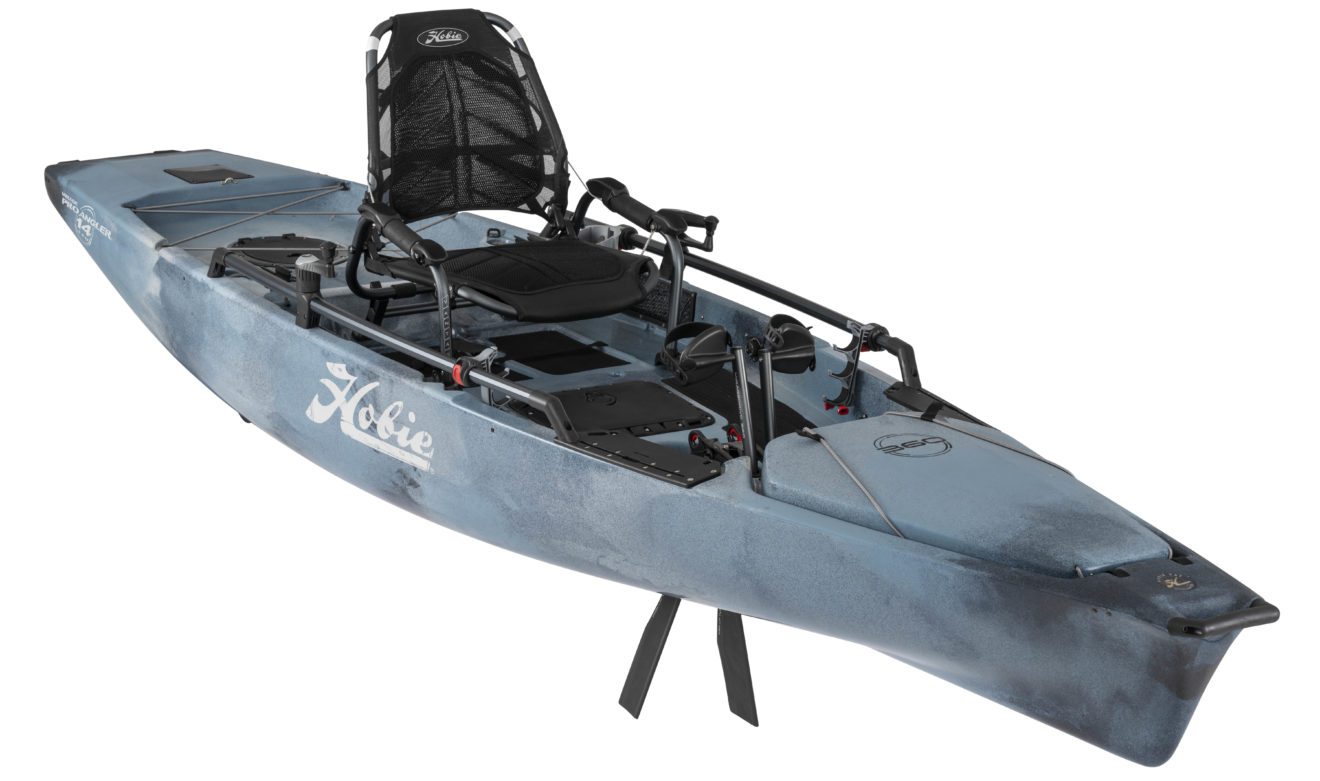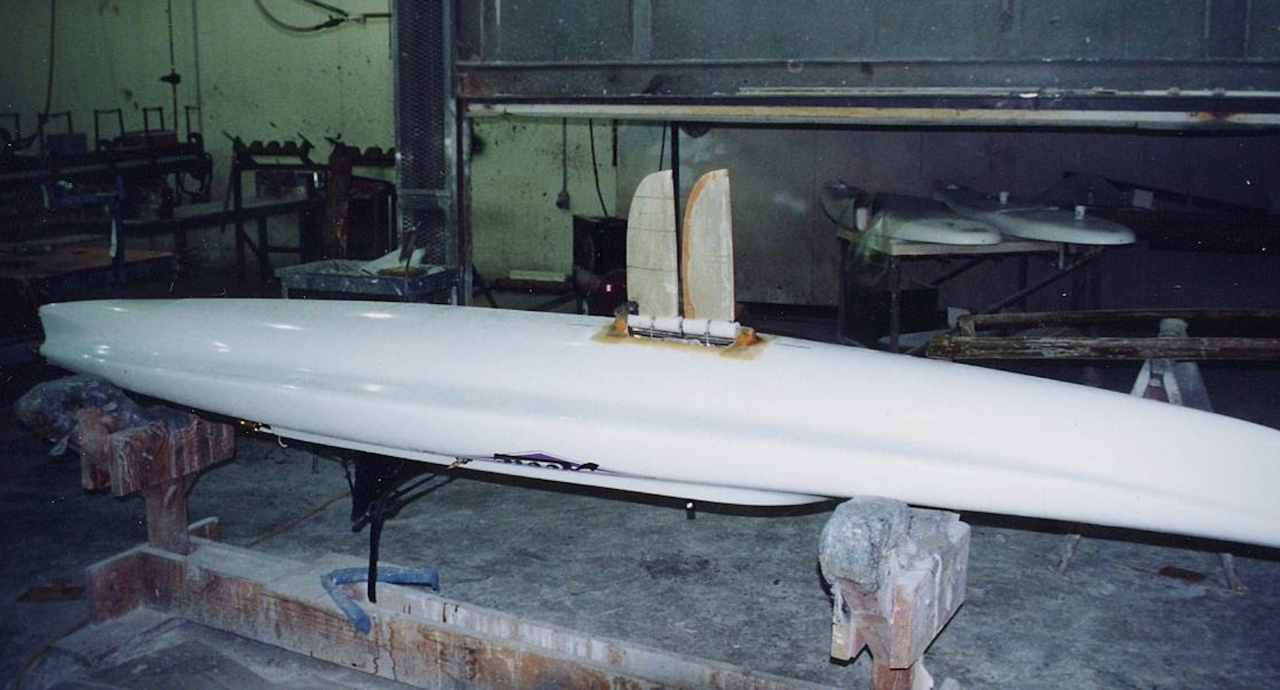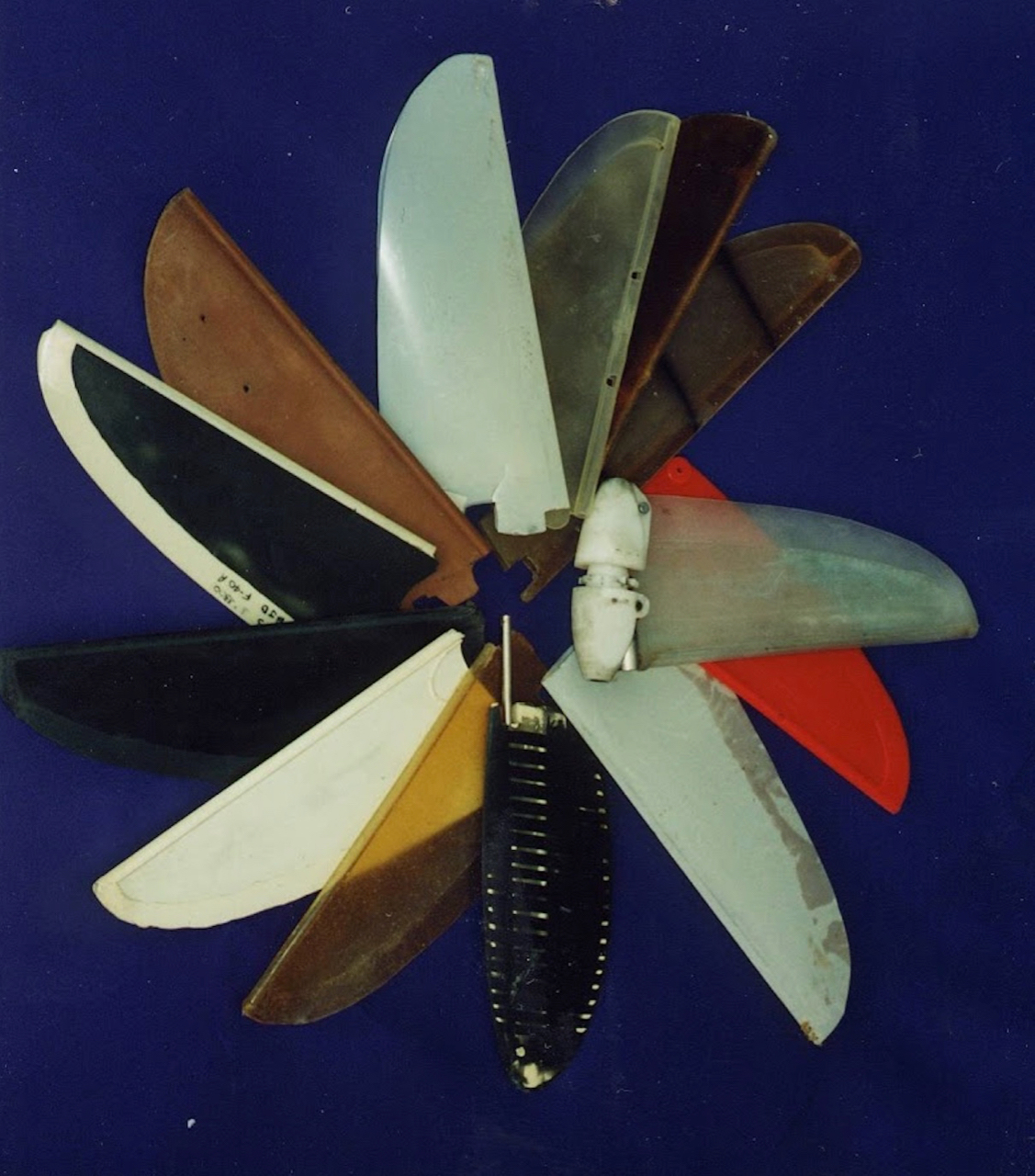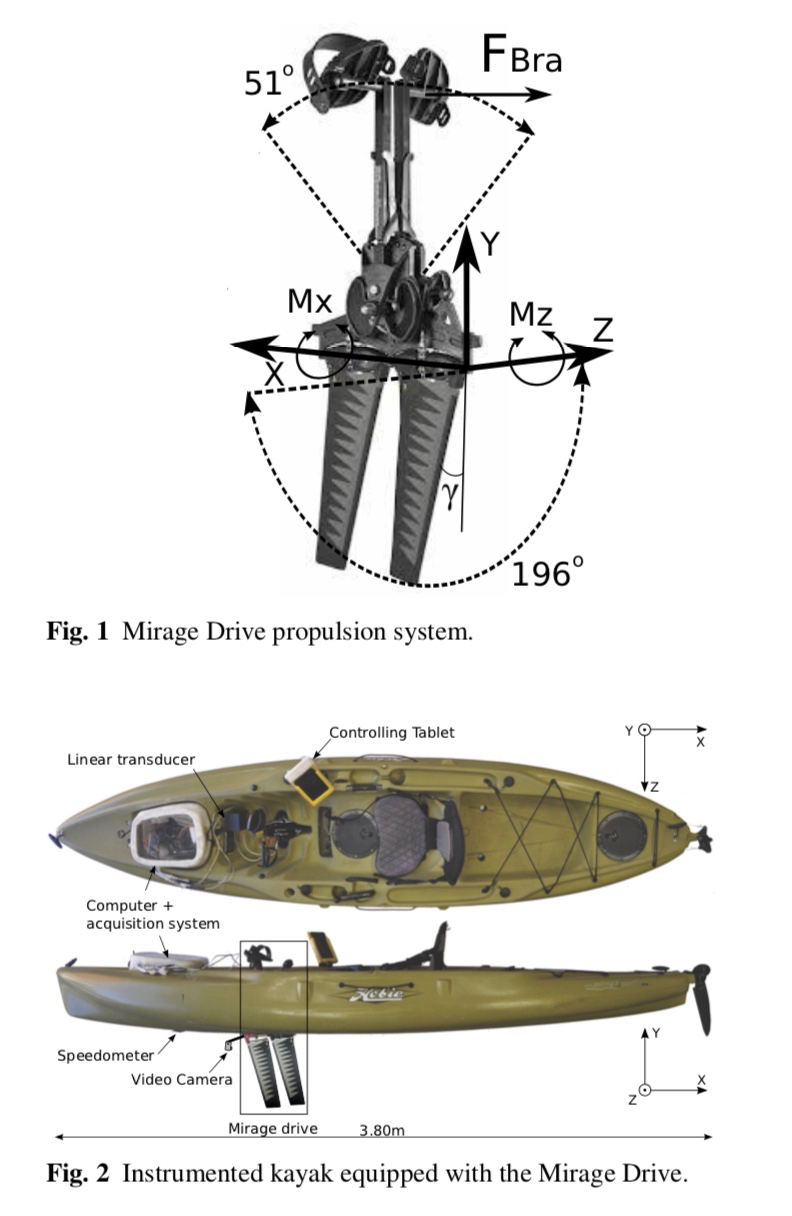Hobie Mirage Drive: More Than Two Decades of Pedal-Driven Fishing
The popularity of kayak fishing – and recreational kayaking in general – is at an all-time high. These versatile, economical, and portable watercraft unlock access to beautiful places and experiences. Advances in design, technology, and manufacturing have combined to fuel this expanding popularity, but the most revolutionary advancement is the evolution of leg propulsion. This development has probably done more to expand kayaking’s reach than any other innovation.
Mirage Drive Beginnings
Various kayak manufacturers now offer some version of leg-propulsion technology to consumers. The very first pedal-drive system originated more than 20 years ago when Hobie introduced a leg-powered technological solution. In 1997, Hobie permanently revolutionized kayaking with the invention of the original Mirage Drive. This replaced the paddle with the sheer efficiency of this patented, pedal-driven system. By using the largest human muscle group, the legs, kayaking became less tiring, more comfortable, and more fun than ever. And because it also freed the hands to fish, it’s easy to point to the Hobie MirageDrive as the single most significant advancement that has driven kayak fishing’s exponential growth over the past two decades.
The birth of the Mirage Drive is a fascinating story that stems from the seminal research and design work of Hobie engineers Greg Ketterman and Jim Czarnowski. From 1997 through 2019, there have been many milestones worth noting – changes to the original MirageDrive that have resulted in greater mobility and increased ease-of-use for kayak anglers across the globe.
Greg Ketterman, an engineer with an extensive background in working on innovative sailboats, was the primary designer of the first Mirage Drive. With this strong background in sailing technologies – much of which was derived from his experience with the world’s pinnacle sailboat racing series, The America’s Cup – Ketterman’s approach to the MirageDrive was as a device with underwater “sails” versus a propeller.
“Imagine the sails on a sailboat working underwater. That’s how he saw the fins of the MirageDrive,” said Hobie Vice President of Engineering, Jim Czarnowski. “The MirageDrive had a mast and sail, but rather than the sail moving in the air and the air moving past the sail, the sail would be driven through the water and produce lift just like a sail would work above the water.”
Roughly the same time that the original Mirage Drive was invented and patented, a young Jim Czarnowski was researching a similar submersible watercraft propulsion technology while studying engineering at M.I.T. in Boston.
“I was at M.I.T. working on something similar called the ‘Penguin Boat’ that had a MirageDrive-type propulsion system on the back – a boat that was propelled by flippers,” says Czarnowski. “The work I did received a lot of publicity, and Hobie cited the work in their MirageDrive patent process. The Boston Globe ran a story on my Penguin Boat, and one of the owners who lives in Boston sent that article to the Hobie headquarters in Oceanside, California. That was my first introduction to a partnership with Hobie. I’ve been with them since 2002, working on various craft and continuous advancements to the MirageDrive.”
MirageDrive Redesign
The MirageDrive existed in its original form for nine years, from 1997 to 2006. During those years the first fishing-specific Hobie watercraft with Mirage Drive was introduced, the Mirage Outback, in 2001. The Mirage Outback featured a much wider platform and more stability than other previous MirageDrive watercraft, boats that were designed, built and marketed specifically for pure kayaking, not fishing. Response to the Mirage Outback was tremendous. Kayak anglers quickly took note of the advantages afforded by leg propulsion. For example, more time casting and less time maneuvering with the paddle.
Four years later, in 2006, the MirageDrive’s fins went through a major shape redesign, the result being the Turbo Fin. One of the Turbo Fin’s major new features was a square tip that produced more thrust with less effort. This increase in thrust was due to the way it twisted when it interacted with the water, creating more productive lift surfaces out near the tips of the fins.
Around the same time, there were major innovations happening in the designs of new watercraft that could be efficiently propelled by the Mirage Drive, like trimaran sailboats. The first of these, the Hobie Adventure Island, was introduced in 2006.
“There’s something that happens when you mix sailing and the MirageDrive; you’re able to essentially motor-sail in light wind so you can pedal and achieve more speed, which is more wind for the sail. It’s a positive feedback scenario where you’re getting more power to the boat so you can push the boat much faster with the MirageDrive. It’s different than, say, using a propeller on a sailboat. When you stop pedaling the drive doesn’t really have any resistance. The fins become straight again and actually provide some lateral resistance. It makes for an amazing sailing boat,” said Czarnowski.
Two versions of this sailboat have become tremendously popular over the years. They are Czarnowski’s personal favorites amongst the entire MirageDrive fleet. The Hobie Adventure Island trimaran was introduced in 2006 and the Tandem Island trimaran in 2009.
“In addition to the changes to the drive that were occurring, we were also working with lots of new and different craft to put the drive on. Originally, the MirageDrive was in the basic kayak. However, we found we could ignore many of the rules of what a kayak really needs to look like. Traditionally, it had to be narrow enough to paddle, but the Mirage Drive allowed us to start making much wider and more stable kayaks designed specifically for anglers. Again, our first fishing kayak with a MirageDrive was the Mirage Outback in 2001. The next major step was the Pro Angler 14 in 2009. Those were different versions of what a pedal fishing kayak could be thanks to MirageDrive propulsion. And we also introduced the first pedal-driven inflatable kayak in 2007,” said Czarnowski.
Fast-forward to 2014 and Hobie made another significant design modification to the Mirage Drive. By putting bearings on all movable surfaces of the drive, Hobie was able to increase efficiency by another 10%. The end result was Glide Technology.
Another milestone in Mirage Drive development occurred in 2016 when Hobie introduced the first stand-up paddleboard with MirageDrive, the Hobie Eclipse.
“This was a new version of the drive. The pedals were oriented horizontally so the user could be standing on the board and pressing down on the pedals. We had to develop new fins that would provide more resistance to accommodate and balance the weight of the user. That resulted in essentially a new drive using the same technology as the previous drive. However, with a new way for the fins to move back and forth from an upright pedaling position. That product became the Hobie Mirage Eclipse in the spring of 2016,” said Czarnowski.
MirageDrive 180 and 360
The summer of 2016 marked a milestone in the history of the MirageDrive, as engineers unveiled the patented MirageDrive 180. This is similar to the previous MirageDrive but allowed users to pull a lever that flips the fins 180 degrees. Flipping the fins allows for kayakers to produce instant thrust in reverse. Prior to this, users had to employ a paddle if they wanted to back up the kayak. The other option was to remove the drive and rotate it manually 180 degrees. MirageDrive 180 offered a quick, efficient and extremely valuable solution to both forward and reverse mobility. Driven by consumer demand, MirageDrive 180 quickly became standard equipment on a host of Hobie products, including fishing kayaks. MirageDrive 180 became a must-have feature with kayak-fishing anglers across the globe.
Earlier this year, Hobie engineers designed and brought to market an even more amazing drive, aptly dubbed MirageDrive 360. Now, with Hobie MirageDrive 360, the boat can move forward or reverse, sideways, diagonally, and spun on its axis. MirageDrive 360 is available on the next generation of Hobie Pro Angler 12 and 14 models. MirageDrive 360 features an extra steering handle on the boat that quickly aims the drive in any direction.
“If you turn that handle, it turns the bottom unit of the MirageDrive 360. The pedals stay in the same place, but the part producing the thrust underneath can be pointed in any direction. This provides true 360-degree maneuverability” said Czarnowski.
The International Convention of Allied Sportfishing Trades’ (ICAST) New Product Showcase Awards recognize the best new fishing products in multiple categories each year. Voted on by attending product buyers and members of the sportfishing media, these “Best of Category” awards represent the pinnacle of achievement in the sportfishing industry and are intensely competitive. The Hobie Mirage Pro Angler 14 with 360 Drive Technology won “Best in Show: Boats and Watercraft”.
The all-new Kick-Up Fins automatically retract upon impact, the MirageDrive 360 delivers precision control and close-quarter maneuverability.
“One of the limitations of all previous pedal-powered drives was potentially damaging the drive by running into a submerged object. With Hobie’s Kick-Up Fins, if the fins encounter an obstruction they’ll retract and re-deploy once the obstacle has passed,” said Czarnowski. “They’re now a standard feature in the MirageDrive 360, MirageDrive 180, and standard MirageDrive craft. This allows kayakers to go where there want and fish how they want with total control and complete confidence.”
From the inception of the first pedal-driven kayak through this year’s release of MirageDrive 360 and Kick-Up Fins, Hobie’s ongoing innovation in engineering and design. This has consistently resulted in more enjoyment, more capability and less worry for all kayakers. Today’s Hobie 360 Pro Angler 12 and 14 represent the pinnacle of Hobie innovation and performance. The Kick-Up fins will be standard equipment on 2020 Hobie Mirage kayaks except for Passport models.





